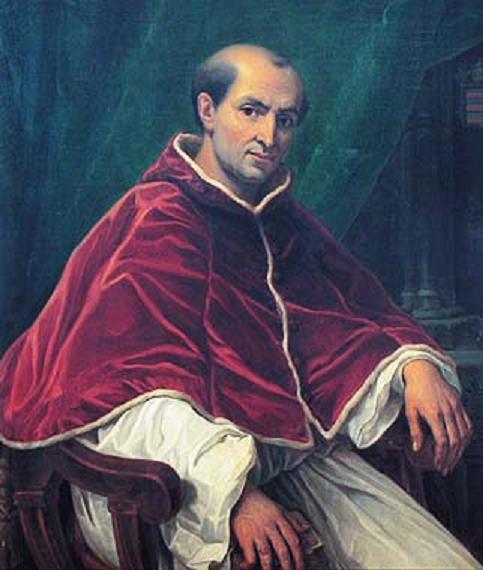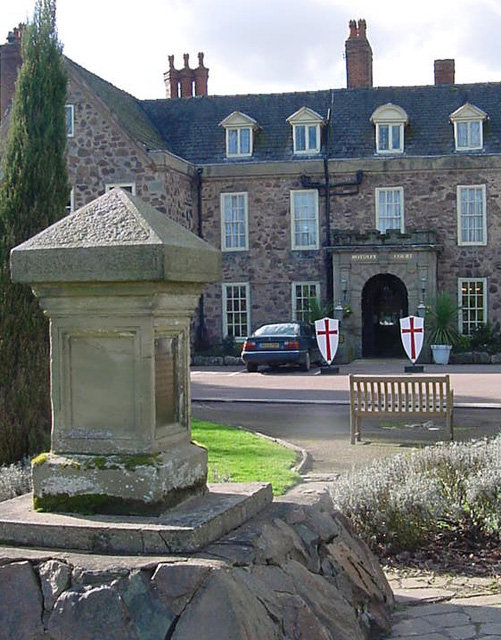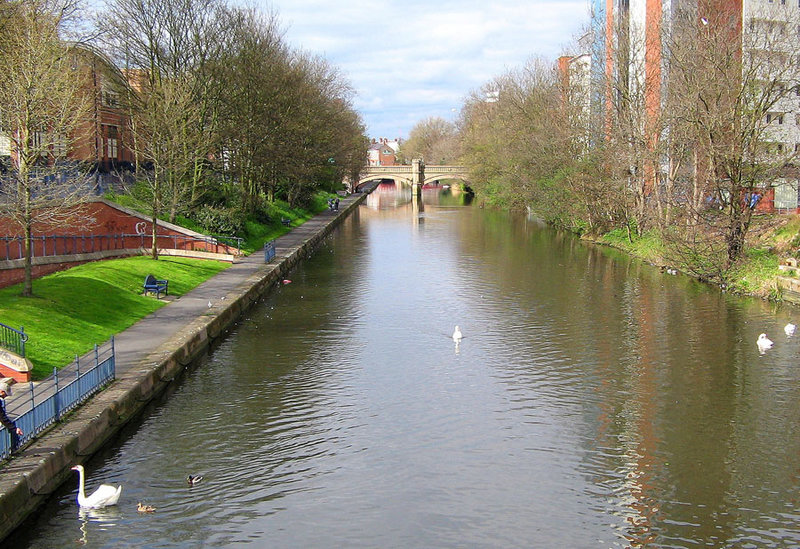|
Rothley
Rothley ( ) is a village and civil parish within the Borough of Charnwood in Leicestershire, England. Situated around west of the River Soar and north of Leicester, it had a population of 3,612 inhabitants . The population measured at the 2011 census was 3,897. Rothley centres on two greens, Cross Green and the Town Green, both of which are accessed by a road that leads from the crossroads. The crossroads lies on the old route of the A6 road, which now bypasses the village. Rothley is one of Leicestershire's most affluent areas based on number of houses worth more than £1 million – especially in some streets such as The Ridgeway, identified in the ''Sunday Times'' as the most expensive place to live in the East Midlands. Most children of primary schooling age attend Rothley (Church of England) Primary School. The main shopping street in the village is Woodgate. Rothley has four churches, Rothley Baptist Church, the Methodist Church, Sacred Heart RC, and the main pa ... [...More Info...] [...Related Items...] OR: [Wikipedia] [Google] [Baidu] |
Rothley Temple
Rothley Temple, or more correctly Rothley Preceptory, (pronounced ''Rowth-Ley'') was a preceptory (a religious establishment operated by certain orders of monastic knights) in the village of Rothley, Leicestershire, England, associated with both the Knights Templar and the Knights Hospitaller. The preceptory's chapel, constructed by the Knights Templar, is currently part of the Rothley Court Hotel. History Foundation Rothley Preceptory was established around the year 1231; however, records show "The Poor Fellow-Soldiers of Christ and of the Temple of Solomon" (more commonly known as the Knights Templar) owned land at Rothley as early as the reign of King John (1199–1216). On the establishment of the preceptory King Henry III granted the Knights Templar the manor and church at Rothley. The preceptory would come to own land in 13 neighbouring villages, including granges used for farming at Baggrave (near Hungarton) and Gaddesby. The knights of the preceptory also owned th ... [...More Info...] [...Related Items...] OR: [Wikipedia] [Google] [Baidu] |
Rothley Saxon Cross
Rothley ( ) is a village and civil parishes in England, civil parish within the Borough of Charnwood in Leicestershire, England. Situated around west of the River Soar and north of Leicester, it had a population of 3,612 inhabitants . The population measured at the 2011 census was 3,897. Rothley centres on two greens, Cross Green and the Town Green, both of which are accessed by a road that leads from the crossroads. The crossroads lies on the old route of the A6 road (England), A6 road, which now bypasses the village. Rothley is one of Leicestershire's most affluent areas based on number of houses worth more than £1 million – especially in some streets such as The Ridgeway, identified in the ''The Sunday Times, Sunday Times'' as the most expensive place to live in the East Midlands. Most children of primary schooling age attend Rothley (Church of England) Primary School. The main shopping street in the village is Woodgate. Rothley has four churches, Rothley Baptist ... [...More Info...] [...Related Items...] OR: [Wikipedia] [Google] [Baidu] |
St Mary & St John Church, Rothley
St Mary & St John is a Church of England parish church in the centre of Rothley, England. It has a congregation of mixed ages and backgrounds. The church aims "to reach out with the good news of Jesus Christ, to be built up as his disciples and to send people out to make God’s love known in the world". Buildings The church is a Grade II* listed building. In the grounds just next to the church is a Saxon cross shaft, evidence of a Christian presence on the site before the Norman Conquest, confirmed in Rothley's entry in King William's Domesday Book. In addition to the main building, the church also makes use of the nearby Old School Rooms, erected in 1837 by Revd William Ackworth as the village school and extended further in 1871 by Revd Richard Burton. It ceased being a school in 1968 when a new school was built on Mountsorrel Lane. The organ is the church's main instrument and is used within the majority of services. It was originally installed in 1929 in dedication to the m ... [...More Info...] [...Related Items...] OR: [Wikipedia] [Google] [Baidu] |
Rothley Court
Rothley Court is a country house at Rothley in Leicestershire, England. It was mentioned in the Domesday Book and later, as Rothley Temple, associated with the Knights Templar. At the Dissolution it became a private house and the seat of the Babington family; Thomas Babington Macaulay was born there in 1800. It now functions as the Rothley Court Hotel. The preceptory's chapel and part of the domestic buildings still exist. Rothley Court incorporates part of the preceptory that was converted for residential use in the 16th century. Much of what can be seen today is from substantial renovation and extension works conducted by John Ely of Manchester, between 1894 and 1895. In 1951, Rothley Court and chapel were protected as Grade I listed building In the United Kingdom, a listed building is a structure of particular architectural or historic interest deserving of special protection. Such buildings are placed on one of the four statutory lists maintained by Historic England in ... [...More Info...] [...Related Items...] OR: [Wikipedia] [Google] [Baidu] |
Thomas Babington
Thomas Babington of Rothley Temple (; 18 December 1758 – 21 November 1837) was an English philanthropist and politician. He was a member of the Clapham Sect, alongside more famous abolitionists such as William Wilberforce and Hannah More. An active anti-slavery campaigner, he had reservations about the participation of women associations in the movement. Early life and education He was the eldest son of Thomas Babington of Rothley Temple, Leicestershire, from whom he inherited Rothley and other land in Leicestershire in 1776. A member of the Babington family, he was educated at Rugby School and St John's College, Cambridge where he met William Wilberforce and other prominent anti-slavery agitators. Anti-slavery and philanthropy Babington was an evangelical Christian of independent means who devoted himself to a number of good causes. His home at Rothley Temple was regularly used by Wilberforce and associates for abolitionist meetings, and it was where the bill to abolish sl ... [...More Info...] [...Related Items...] OR: [Wikipedia] [Google] [Baidu] |
Mountsorrel
Mountsorrel is a village in Leicestershire on the River Soar, just south of Loughborough with a population in 2001 of 6,662 inhabitants, increasing to 8,223 at the 2011 census. Geography The village is in the borough of Charnwood, surrounding a steep hill, once crowned by a castle, and is bordered to the east by the River Soar. The village is renowned for the Buttercross Market in the village centre as well as its granite quarry, the largest in Europe. The Leicester arm of the Grand Union Canal runs through Mountsorrel. The civil parish meets with Rothley to the south, and some houses are actually in Rothley parish near the southern A6 junction. To the west of the parish is a nature reserve. North of here, the Leicestershire Round passes east–west through the north of the village. The parish boundary meets Quorndon where it first meets the quarry near Buddon Wood. North of there, it crosses the former A6, towards Quorn from the roundabout for the A6 roundabout. Close to t ... [...More Info...] [...Related Items...] OR: [Wikipedia] [Google] [Baidu] |
Mid Leicestershire (UK Parliament Constituency)
Mid Leicestershire is a constituency represented in the House of Commons of the UK Parliament since 2024 by Peter Bedford, a Conservative. Boundaries Further to the 2023 Periodic Review of Westminster constituencies The 2023 review of Westminster constituencies was the most recent cycle of the process to redraw the Constituencies of the Parliament of the United Kingdom, constituency map for the House of Commons of the United Kingdom. The new constituency b ..., the composition of the constituency was defined as follows (as they existed on 1 December 2020): * The District of Blaby wards of: Ellis; Fairestone; Forest; Millfield; Muxloe; Ravenhurst and Fosse; Winstanley. * The Borough of Charnwood wards of: Anstey; Birstall Wanlip; Birstall Watermead; Forest Bradgate; Mountsorrel; Rothley and Thurcaston. * The Borough of Hinckley and Bosworth wards of: Groby; Markfield, Stanton and Fieldhead; Ratby, Bagworth and Thornton. It comprises the majority of the abolished constitu ... [...More Info...] [...Related Items...] OR: [Wikipedia] [Google] [Baidu] |
Charnwood (borough)
Charnwood is a local government district with borough status in the north of Leicestershire, England. It is named after Charnwood Forest, much of which lies within the borough. Towns in the borough include Loughborough (where the council is based), Shepshed and Syston. Villages in the borough include Barrow upon Soar, Birstall, Hathern, Mountsorrel, Quorn, Rothley, Sileby and Woodhouse Eaves. The neighbouring districts are Melton, Harborough, Leicester, Blaby, Hinckley and Bosworth, North West Leicestershire and Rushcliffe. History The district was created on 1 April 1974 under the Local Government Act 1972, covering the area of three former districts, which were all abolished at the same time: * Barrow upon Soar Rural District * Loughborough Municipal Borough * Shepshed Urban District Prior to the new district coming into being there was some debate as to what name it should take, with alternatives considered including "Loughborough and Soar Valley", "Gr ... [...More Info...] [...Related Items...] OR: [Wikipedia] [Google] [Baidu] |
A6 Road (England)
The A6 is one of the main north–south roads in England. It runs from Luton in Bedfordshire to Carlisle in Cumbria, although it formerly started at a junction with the A1 road (Great Britain), A1 at Chipping Barnet, Barnet in north London, and is described as running from London to Carlisle. Running north-west from Luton, the road passes through Bedford, Bedfordshire, Bedford, bypasses Rushden, Kettering and Market Harborough, continues through Leicester, Loughborough, Derby and Matlock, Derbyshire, Matlock before passing through the Peak District to Bakewell, Buxton, Stockport, Manchester, Salford, Greater Manchester, Salford, Chorley, Preston, Lancashire, Preston, Lancaster, Lancashire, Lancaster, Kendal and Penrith, Cumbria, Penrith before reaching Carlisle. South of Derby, the road runs approximately parallel to the M1 motorway; between Manchester and Preston, it is close to the M6 motorway, M6 and M61 motorway, M61 motorways; and from Preston to its northern terminus ... [...More Info...] [...Related Items...] OR: [Wikipedia] [Google] [Baidu] |
River Soar
The River Soar () is a major tributary of the River Trent in the East Midlands as well as the principal river of Leicestershire, England. The source of the river is midway between Hinckley and Lutterworth. The river then flows north through Leicester, where it is joined by the Grand Union Canal. Continuing on through the Leicestershire Soar Valley, it passes Loughborough and Kegworth until it reaches the Trent at the county boundary. In the 18th century, the Soar was made navigable, initially between Loughborough and the Trent, and then through to Leicester. It was not until the early 19th century that it was linked by the Grand Union Canal to the wider network to the south and to London. Name The name of the ''Soar'' is included in a family of old river-names derived from a root ''*ser-'' "to flow", alongside (among others) ''Saravus'' (''Soar'', a tributary of the Moselle in Belgium), ''Sera'' (''la Serre'', ''la Cère'' and ''le Séran'', three rivers in France), ... [...More Info...] [...Related Items...] OR: [Wikipedia] [Google] [Baidu] |
Zachary Macaulay
Zachary Macaulay (; 2 May 1768 – 13 May 1838) was a Scottish statistician and abolitionist who was a founder of London University and of the Society for the Suppression of Vice, and a Governor of British Sierra Leone. Early life Macaulay was born in Inveraray, Scotland, to Margaret Campbell and John Macaulay (1720 – 1789), who was a minister of the Church of Scotland and a grandson of Dòmhnall Cam. He had two brothers: Aulay Macaulay, who was an antiquary, and Colin Macaulay, who was a general and an abolitionist. Zachary Macaulay was not educated in, but taught himself, Greek and Latin and English literature. Career Macaulay worked in a merchant's office in Glasgow, where he fell into bad company and began to indulge in excessive drinking. In late 1784, when aged 16, he emigrated to Jamaica. There, he worked as an assistant manager at a sugar plantation. However, he objected to slavery, contrary to the preference of his father, and renounced his job. He returned, in ... [...More Info...] [...Related Items...] OR: [Wikipedia] [Google] [Baidu] |





